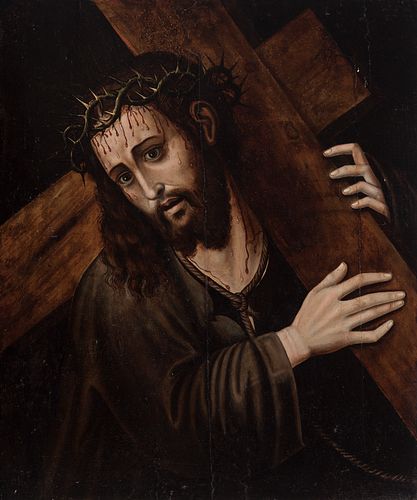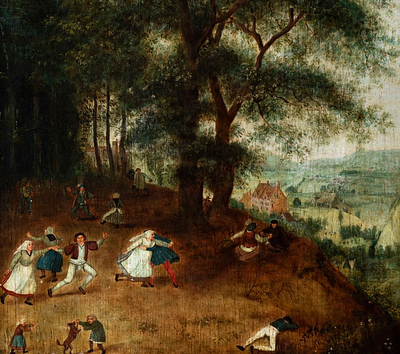Spanish school; second half of the 16th century. "Jesus on the way to Calvary." Oil on panel. Cradled. It has openings in the table and repaints.
Lot 85
About Seller
Setdart Auction House
Carrer Aragó 346
Barcelona
Spain
Setdart Subastas was born in 2004 and is currently the first online art auction in Spain with solidity, prestige and reliability guaranteed by our more than 60,000 users. Setdart has a young, dynamic and enterprising team ready to successfully manage the purchase and sale of art works through custom...Read more
Estimate:
EUR€5,000 - EUR€6,000
$5,102.04 - $6,122.45
Absentee vs Live bid
Two ways to bid:
- Leave a max absentee bid and the platform will bid on your behalf up to your maximum bid during the live auction.
- Bid live during the auction and your bids will be submitted real-time to the auctioneer.
Bid Increments
| Price | Bid Increment |
|---|---|
| EUR€0 | EUR€10 |
| EUR€200 | EUR€25 |
| EUR€500 | EUR€50 |
| EUR€1,000 | EUR€100 |
| EUR€3,000 | EUR€200 |
| EUR€5,000 | EUR€500 |
| EUR€10,000 | EUR€1,000 |
| EUR€20,000 | EUR€2,000 |
| EUR€50,000 | EUR€5,000 |
About Auction
By Setdart Auction House
Jun 30, 2021
Set Reminder
2021-06-30 08:30:00
2021-06-30 08:30:00
America/New_York
Bidsquare
Bidsquare : Old Masters
https://www.bidsquare.com/auctions/setdart-auction-house/old-masters-7134
Setdart Auction House sofia@setdart.com
Setdart Auction House sofia@setdart.com
- Lot Description
Spanish school; second half of the 16th century. "Jesus on the way to Calvary." Oil on panel. Cradled. It has openings in the table and repaints. Measures: 74 x 61 cm. Following northern Italian models. In this work the theme of Christ on the way to Calvary is captured as a single scene, without any narration that alludes to the path that Jesus has made, during Calvary. In this case the author only portrays the bust of Christ, and part of the Cross, which is resting on his shoulder, while it is held in his hands. The attention of the scene is completely focused on the foreground, since everything else is veiled by a completely dark background, so the viewer can only perceive the body bent under the weight of the cross. The scene has other attributes of the Passion, such as the crown of thorns, from which numerous drops of blood come out, and the rope still hanging from his neck. In spite of the evident traces of torture and the expressiveness of the blood sliding down his face, Christ's gesture does not indicate suffering, he simply keeps his mouth half open, as well as his eyes, which indicates a certain surprise at the humiliation he suffered during the whole Calvary. The representation of Jesus carrying the cross on his shoulders on the way to Calvary, half-length and in the foreground, was one of the most frequent themes for private devotional paintings during the Baroque period. In this type of work, the primordial thing was the representation of Christ's suffering, leaving aside narration and rhetoric. They are images that should, following the guidelines of the Council of Trent, move the faithful through a dramatic representation of the sufferings of Jesus. In this sense, the focus here is on the face of Christ, suffering and weary but at the same time expressing his submissive acceptance of his destiny in favor of humanity. Formally, this work follows baroque approaches, such as the desire for naturalism and veracity, although it presents a certain inspiration from the masters of northern Italy, both in the chromaticism and in the way of composing the scene, revealing a certain spatial tension.
- Shipping Info
-
In-house shipping available. Please inquire at admin@setdart.com.
-
- Buyer's Premium



 EUR
EUR CAD
CAD AUD
AUD GBP
GBP MXN
MXN HKD
HKD CNY
CNY MYR
MYR SEK
SEK SGD
SGD CHF
CHF THB
THB
















